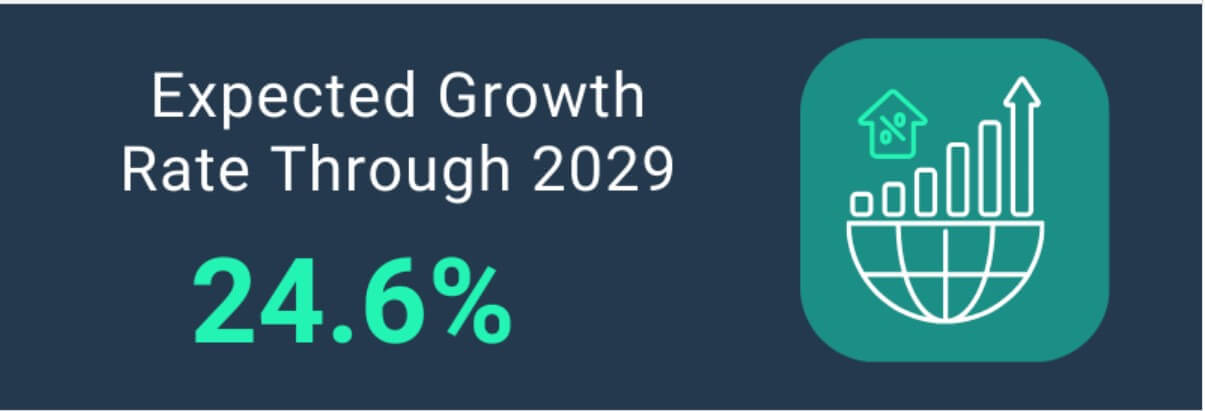In 2025, the virtual assistant market will hit $8.17 billion—and small businesses that adopt this one growth hack now are leading the race.
If your small business is stuck in survival mode, it’s time to think smarter, not harder.
Virtual assistants (VAs) are the ultimate growth hack for scaling fast without breaking the bank. Imagine reclaiming hours from repetitive tasks, accessing specialized skills on demand, and slashing overhead costs.
In 2025, success isn’t about grinding harder. It’s about working really smart. Hiring strategically. Business owners who hire VAs are growing faster and more profitably than their hard-working competitors.
It’s time for you to make this game-changing move.
I. Why Virtual Assistants Are the Ultimate Growth Hack
What is a “growth hack?” It’s an innovative, low-cost strategy designed to skyrocket growth. Think of it as the business equivalent of cutting through traffic with a shortcut.
Growth hacks let small businesses compete with bigger players without the massive budgets and resources. And right now, one of the most effective growth hacks isn’t a shiny new equipment or novel management approach—it’s hiring a virtual assistant.
According to The Business Research Company, the VA market is expected to grow to $8.17 billion in 2025.

Every year, more and more businesses are enlisting the help of virtual assistants to rapidly scale.
Here’s why VAs are the ultimate growth hack:
- They free up your time for high-value tasks.
Small business owners often spend their days buried in admin work—answering emails, scheduling appointments, or managing invoices.Every hour spent on these tasks is an hour not spent on marketing, product development, or closing sales. A virtual assistant takes those tasks off your plate, giving you back the time and energy to scale your business.
For instance, a boutique marketing agency hired a VA to handle client onboarding and social media scheduling. With these time-consuming tasks delegated, the owner gained at least 10 extra hours a week—time used to pitch and land three new clients in a month.
- You get access to specialized skills without the overhead.
VAs bring expertise in areas like bookkeeping, graphic design, customer support, and more. Instead of hiring a full-time employee—and paying for office space, benefits, and training—you pay only for the time or tasks you need—perfect for businesses with tight budgets.A tech startup needed help with product listing optimization for its e-commerce platform. Instead of hiring a costly specialist, they brought in a VA (working remotely) with experience in SEO and copywriting. The result? A 30% increase in product visibility and an uptick in sales within three months.
- Scaling becomes seamless and affordable.
The beauty of hiring virtual assistants lies in scalability. When business owners delegate tasks, more gets done, and the business becomes freed from the limitations of one person doing all the work.
For instance, a small e-commerce store owner who used to manage everything—from customer inquiries to updating product listings—hires a VA to handle these tasks. With these responsibilities off her plate, she improved the marketing strategies and planned for expansion.
More clients meant hiring more VAs. But instead of being overwhelmed, her first VA took care of the recruitment process and onboarding—making the scaling process much more manageable.
II. Financial Benefits of Hiring Virtual Assistants
When an industry is expected to post a Compound Annual Growth Rate of 24.6% through 2029, that means it is solving critical pain points for businesses.

The financial impact of VAs is undeniable—providing the same (if not better) output as full-time in-house employees…but at a fraction of the cost.
1. Cost Savings: In-House Employees vs. VAs
Hiring in-house doesn’t just mean paying a higher salary. It’s about more overhead. When you factor in office space, equipment, insurance, benefits, and training, the true cost of an employee skyrockets. For example, in the U.S., a full-time employee can cost upwards of $40,000 annually, depending on the role.
Now, consider a VA—an experienced professional working remotely. A skilled VA can offer the same expertise, whether in admin, marketing, or customer service, without the added expense.
A small marketing firm could hire a full-time admin assistant for $40,000 annually, or a highly skilled VA for just $20,000, saving the other $20,000 of labor costs.
By saving 50% on staffing costs, businesses can reinvest in high-growth areas like digital marketing or product development, improving competitiveness and overall profitability.
2. Flexibility: Pay for What You Need, When You Need It
Need someone for 10 hours a week to handle your calendar or emails? No problem. Looking for a full-time assistant during a busy product launch? Done. Unlike full-time employees, VAs offer flexibility. You pay for exactly what you need—hourly, part-time, or full-time—without committing to long-term salaries and benefits—ensuring you’re only spending on the services you need.
3. Access to Global Talent
One of the biggest advantages of VAs is the ability to tap into a talent pool that is not available locally.
Countries like the Philippines, India, and Vietnam offer highly skilled virtual assistants at highly affordable rates. These countries are culturally compatible with Western expectations and VAs, especially those coming from the Philippines, are fluent in English, highly educated, and experienced in everything from customer support to digital marketing.
They are known for their exceptional communication skills, ensuring seamless interactions with clients, customers, and colleagues. These professionals also possess the adaptability that makes them an excellent fit for small businesses, as they can quickly adjust to the challenges of a fast-changing environment.
Their work ethic is second to none–which means small businesses can rely on them to deliver consistently high-quality work
A UK-based e-commerce startup hired a VA from the Philippines for customer support and product listings. That one hack saved the startup 70% in staffing costs every month, all while receiving top-tier customer management.
Virtual assistants give small businesses access to skilled talent at a price that makes sense for their bottom line. By opting for VAs, you can reduce overhead, scale your operations, and invest more in growth.
III. Unlocking Potential: How VAs Help Small Businesses Achieve Rapid Growth

Here’s how VAs trigger growth opportunities for small businesses.
-
- Accelerated Operations
Hiring full-time employees requires office space, benefits, and a whole host of logistics. Virtual assistants let you skip all of that.By bringing in VAs, you can quickly add skilled team members without worrying about office space, equipment, or high payroll costs. It means you hit the ground running.
Whether you need help with customer service, marketing, or administration, VAs can plug right into your workflow and take on tasks seamlessly. Your business becomes instantly agile and quicky capitalizes on the many opportunities that appear in the market.
- Accelerated Operations
-
- Optimized Workflows
By hiring VAs, you don’t just increase the speed of workflow, you also simplify and streamline it.Hiring VAs ensures that everything is optimized, and that time and talent are allocated to commensurate tasks. You will experience the simplifying nature of VAs when you’re not jumping at every email knowing somebody is going to take care of it for you. You on the other hand, have all your brain power focused on the big picture.
Efficiency is everything when you’re trying to grow quickly. By outsourcing time-consuming chores, you get back valuable hours that can be used to focus on higher-level work, like strategy, innovation, or customer acquisition.
- Optimized Workflows
- Market Expansion
Growth is often tied to the ability to operate across time zones and geographies. With virtual assistants, businesses can function around the clock, offering 24/7 customer support or handling inquiries outside of normal working hours.This means that whether you’re in North America, Europe, or Asia, your business can stay in constant motion, responding to customer needs, processing orders, or even launching new products—no matter the time of day. VAs provide the flexibility needed to tap into new markets and expand operations globally without needing to hire full-time staff in every location.
IV. How To Hire Virtual Assistants
If you’re ready to leverage virtual assistants (VAs) as a growth hack for your business, the process is simpler than you might think. By following these steps, you can unlock a world of time-saving and cost-effective benefits.
Step 1: Identify Areas to Delegate
The first step is to pinpoint tasks that are taking up too much of your time or resources. These are usually the repetitive, low-value activities that keep you busy but don’t directly contribute to growing your business.
Typical areas to delegate include:
- Administrative tasks: Scheduling, data entry, email management.
- Marketing tasks: Social media management, content creation, email campaigns.
- Customer service: Responding to inquiries, managing support tickets, and processing orders.
By offloading these responsibilities, you free up your time to focus on high-priority tasks.
Step 2: Choose the Right VA
Once you know what to delegate, the next step is selecting the right virtual assistant. This is key—make sure their skills align with your business needs.

For example, if you need help with marketing, find a VA with experience in social media management or content creation. If customer service is a priority, look for someone with strong communication skills and experience in handling customer inquiries.
Here are some of the DO’s and DON’Ts when choosing your VA.
DO’s
- Conduct a Skills Test: Assign a small trial task to evaluate their skills and efficiency.
- Check Reviews or References: Ask for testimonials or recommendations from previous clients.
- Evaluate Communication Skills: Choose someone who can clearly and effectively communicate in your preferred language.
- Interview Thoughtfully: Ask detailed, situational questions to gauge their problem-solving ability.
- Prioritize Adaptability: Ensure they are comfortable with learning new tools or processes specific to your business.
Don’ts
- Rush the Hiring Process: Avoid hiring the first candidate without proper screening or testing.
- Overlook Cultural Fit: Don’t ignore differences in work style or cultural alignment with your team.
- Ignore Availability: Ensure the VA’s working hours align with your business needs or overlap sufficiently.
- Focus Only on Cost: Low rates don’t always translate to good quality—balance affordability with expertise.
Taking the time to match the right VA with the right tasks will make all the difference in your business’s ability to scale effectively.
Step 3: Leverage Collaboration Tools
To ensure seamless communication and task management, make use of collaboration tools that streamline workflows. Tools like Trello, Asana, Slack, or Monday.com help you stay organized and ensure everyone is on the same page.
These tools allow you to:
- Assign tasks and set deadlines.
- Communicate in real-time.
- Track progress on various projects.
By integrating these platforms, you eliminate any potential confusion and create an efficient system for remote collaboration.
Step 4: Regularly Review Performance and Adapt Responsibilities
Your needs and business goals will evolve, and so should the role of your VA. Regularly check in to review their performance, discuss challenges, and assess whether they’re meeting expectations.
Be prepared to adjust their responsibilities based on your growing needs. This may involve shifting tasks, introducing new projects, or even hiring additional VAs to handle specific functions.
By following these steps, you can seamlessly integrate virtual assistants into your business model and use them as a powerful growth hack. The combination of freeing up time, hiring for specialized tasks, and using the right tools can take your business to the next level without adding significant overhead.
V. Case Study: How a Small Bookkeeping Business Used a Virtual Assistant to Scale and Grow

Background
Sarah, the owner of a small bookkeeping business, was drowning in routine tasks. Her time was consumed by client invoicing, follow-ups, and reconciling schedules with clients, leaving her little room to grow her business. She wanted to expand her services to include financial consulting but couldn’t because of her packed schedule.
Recognizing that she was stuck in operations rather than focusing on strategic growth, Sarah decided to hire a specialized Virtual Assistant (VA). Here’s how she leveraged a VA to scale her business effectively.
Step 1: Identify Areas to Delegate
Sarah realized she was spending 70% of her time on non-core tasks:
- Preparing and sending client invoices.
- Following up on overdue payments.
- Organizing client appointments.
- Managing email correspondence and basic bookkeeping data entry.
Action Taken:
She created a task list of all activities she could delegate. These included:
- Generating and sending invoices via accounting software.
- Emailing clients about overdue payments.
- Responding to routine inquiries.
- Setting up appointments through a shared calendar system.
Step 2: Choose the Right Virtual Assistant
Finding a VA with the right expertise in bookkeeping tools like QuickBooks and a strong understanding of financial workflows was critical.Action Taken:
Sarah engaged the services of a VA provider, specifying:
- Knowledge of accounting software (QuickBooks, Xero).
- Strong organizational and communication skills.
- Experience with small business bookkeeping.
After screening several candidates, she conducted interviews and assigned a trial task: creating a sample invoice and drafting a client follow-up email.
Result:
Sarah hired a VA with three years of experience working with small businesses and proficiency in QuickBooks.
Step 3: Leverage Collaboration Tools
Sarah needed to ensure seamless communication and task tracking despite working remotely.Action Taken:
She implemented the following tools:
- Slack: For quick communication and updates.
- Trello: To organize tasks, deadlines, and priorities.
- Google Calendar: For scheduling client meetings and personal reminders.
- Loom: To create instructional videos for onboarding the VA.
Result:
The VA quickly learned Sarah’s workflow and could execute tasks independently within two weeks.
Step 4: Regularly Review Performance
Challenge:
She scheduled weekly 30-minute check-ins to:
- Review completed tasks.
- Provide feedback on areas for improvement.
- Discuss any roadblocks or questions the VA encountered.
Result:
The VA’s efficiency improved over time, and Sarah began entrusting them with more responsibilities, such as tracking client retention metrics and generating financial reports.
By delegating 70% of her operational workload, Sarah achieved the following:
- Revenue Growth: With more time to focus on financial consulting, Sarah onboarded five new clients in six months, increasing her revenue by 40%.
- Improved Cash Flow: The VA’s timely follow-ups on invoices reduced payment delays by 50%.
- Streamlined Operations: Tasks that previously took Sarah hours were completed by the VA in half the time, allowing faster project turnarounds.
According to Sarah, “Before hiring a VA, I was drowning in administrative tasks. I used to think there was no way I could take on more clients without working 12-hour days. Hiring a remote assistant made growing the business possible.”
VI. Challenges of Working with Virtual Assistants (And How to Overcome Them)

While virtual assistants (VAs) offer a powerful growth hack, there are a few challenges that businesses may face when working with remote staff. Fortunately, these challenges are manageable. Here are the common issues and how to overcome them.
1. Communication Barriers
One of the most common hurdles in working with virtual assistants is communication. Misunderstandings can arise due to physical distance, language differences, or lack of clear expectations.
Solution: Use Video Calls, Detailed Task Instructions, and Feedback Tools
To ensure clear communication, prioritize video calls for important discussions. Video calls help establish a more personal connection and make it easier to address complex issues.
For routine tasks, provide clear and detailed instructions. Instead of assuming understanding, break down processes and expectations in writing. Tools like Loom allow you to record step-by-step instructions, providing your VA with a visual reference that’s easy to follow.
Regular feedback sessions are also crucial. Set a time each week to discuss performance, clarify any confusion, and adjust strategies. This ensures that both you and your VA are aligned and can address issues before they snowball.
2. Time Zone Differences
Another challenge when working with VAs, especially those overseas, is the time zone difference. This can create delays in communication and slow down decision-making processes.
Solution: Create Overlapping Working Hours
Establish common, overlapping working hours. For example, if your VA is based in a different time zone, establish a few hours each day that both of you can work simultaneously, ensuring timely communication and problem-solving.
Another effective strategy is to hire VAs who work in time zones that align with your business needs. If your business requires 24/7 support, consider building a team of VAs across multiple time zones to ensure there’s always someone available.
3. Onboarding Issues
Bringing a VA on board can sometimes be a challenge, particularly if the process isn’t structured. Without proper onboarding, your VA may feel lost, and tasks could be handled incorrectly, wasting valuable time and resources.
Solution: Use a Structured Onboarding Process and Clear Documentation
To smooth out the onboarding process, create a well-documented system that walks new VAs through their responsibilities, tools, and expectations. This should include:
- A comprehensive introduction to the company and its culture.
- Detailed instructions on how to use the tools and systems in place.
- Examples of past work or templates to help them get started.
Make sure your VA understands the “Why” behind their tasks as well as the “How.” This will ensure your VA is aligned with your goals and workflow from day one.
By proactively addressing these challenges, virtual assistants should enhance your business growth rather than hinder it. Clear communication, strategic time zone management, and thorough onboarding will help you build a smooth, effective partnership with your VAs and fully unlock their potential as a growth hack.
VII. Trends in Virtual Assistants for 2025
The VA market will continue to grow exponentially and is predicted to reach $19.66 billion by 2029.

Virtual assistants have come a long way from basic admin support. In 2025, they’re a powerhouse of specialized skills, tech-savvy tools, and global reach. Here’s what’s shaping the future of VAs and how they’re changing the game for small businesses.
1. Specialization of Virtual Assistants
In 2025, virtual assistants won’t be generalists—they’ll be experts in specific niches. Whether it’s e-commerce, digital marketing, bookkeeping, or real estate, businesses now seek VAs who can hit the ground running with specialized skills that bring value from day one.
For instance, a real estate VA isn’t just managing calendars—they’re handling lead management, responding to client inquiries, organizing property listings, and even assisting with marketing strategies to attract buyers. This specialized support frees up your time to focus on high-level decisions, like closing deals or growing your property portfolio.
2. Integration of AI and Automation Tools
Artificial intelligence isn’t replacing VAs—it’s enhancing their work. In 2025, AI-powered virtual assistants are seamlessly integrated into daily operations, using tools like ChatGPT for customer interactions, data analysis, and content creation.
Automation tools are becoming the backbone of VAs’ work. Think of AI as the engine, and your VA as the driver. From managing emails to generating reports, VAs are now using advanced software to streamline repetitive tasks, while bringing personal touch where needed. This collaboration of human intelligence and AI efficiency is a boon to productivity.
A digital marketing VA, for instance, can work alongside AI tools like ChatGPT to draft email campaigns, focusing on personalizing content for specific clients, and ensuring the message stays on-brand.
3. Remote Work Normalization
Working remotely isn’t a trend anymore—it’s the new norm. By 2025, businesses will be increasingly comfortable working with global, remote staff. And the rise of virtual assistants has made it easier than ever to tap into talent from all corners of the globe.
This global reach means businesses can hire highly skilled professionals from regions where costs are lower, but the quality of work remains exceptional. Whether you’re based in the U.S., the UK, or anywhere in between, there’s no shortage of qualified VAs in countries like the Philippines, India, and South America—many of whom are working from home, in flexible environments that enhance productivity.
Remote work normalization has allowed small businesses to scale quickly and efficiently, using specialized VAs as a hack to drive growth.
VIII. Predictions for the Future of Virtual Assistants
As we look ahead to 2025, the role of virtual assistants is only going to evolve. Here’s what we can expect to see in the coming years.
1. Increased Collaboration Between AI and Human VAs

AI and automation will not replace your VA.
In the near future, expect an even deeper collaboration between AI and human virtual assistants. Automation tools like ChatGPT, AI-driven task management systems, and smart scheduling platforms will integrate seamlessly into VA workflows, making them exponentially more efficient.
AI will handle routine, time-consuming tasks—like data entry, email filtering, and scheduling—while human VAs can focus on higher-level, value-added tasks that require critical thinking and decision-making. (There will always be higher-level tasks to occupy your VA.)
2. Higher Demand for Industry-Specific Expertise
As businesses continue to grow and specialize, the demand for virtual assistants with niche skills will skyrocket. Small businesses will no longer just need general VAs. (Those tasks will be outsourced to AI.) They will need industry experts who understand their industry inside and out.
Examples of Specialized VAs:
- E-commerce VAs will manage everything from product hunting, and competitor analysis to customer support.
- Digital marketing VAs will run ad campaigns, optimize SEO, and produce content.
- Bookkeeping VAs will handle finances, taxes, and compliance tasks for niche industries.
Specialized VAs are a must-have resource moving forward. The talent war will be on who has the brightest and most efficient VAs.
3. Global Talent Pool Expansion
Small businesses will increasingly turn to international markets to find skilled VAs, with countries like the Philippines leading the way.
The Philippines has long been a hub for virtual assistants, with its large, well-educated, English-speaking workforce. As global businesses continue to recognize the advantages of hiring remote talent, the Philippines is poised to become an even more attractive market for top-tier VAs.
IX. Case Study: Why the Philippines Is Leading the Charge in the Virtual Assistant Industry
Background
James, the founder of a mid-sized e-commerce store based in Australia, was struggling to manage his growing workload. With rising operational costs and an increasing demand for 24/7 customer support, he sought a solution that would help him scale without overburdening his budget.
After researching his options, James decided to explore hiring a Virtual Assistant (VA) from the Philippines, a country renowned for its skilled remote workforce.
Challenges
James’s primary challenges were:
- Cost Efficiency: Hiring locally would have cost him approximately AUD 5,500 per month per employee, excluding benefits.
- Skill Gaps: Local candidates lacked the experience needed for specialized tasks like e-commerce inventory management and customer support.
- Time Zone Coverage: His Australian team couldn’t provide consistent after-hours customer service, leading to a loss of international customers.
Why the Philippines?

After initial research, James identified the Philippines as the ideal source for hiring VAs due to:
- Language Proficiency: A high level of English fluency, is essential for customer support and client interactions.
- Cultural Compatibility: The Philippine workforce is known for adaptability and alignment with Western business practices.
- Cost-Effectiveness: Competitive rates allowed James to hire top talent at around AUD 2,000—a fraction of the cost of local hires.
- Specialized Skills: Many Filipino VAs are experienced in e-commerce platforms like Shopify and Amazon, social media management, and customer service.
Solution: Hiring Filipino Virtual Assistants
James decided to onboard two VAs from the Philippines through a reputable staffing agency specializing in offshore talent.
VA #1: Customer Support Specialist
- Managed live chat, email, and social media inquiries.
- Addressed customer complaints and processed refunds efficiently.
- Provided 24/7 coverage, ensuring customers from different time zones received timely responses.
VA #2: E-Commerce Operations Assistant
- Updated product listings on Shopify, including descriptions, pricing, and images.
- Monitored inventory levels and coordinated with suppliers to avoid stockouts.
- Handled order processing, tracking, and coordination with shipping providers.
Implementation
- Onboarding: James used video tutorials and a shared knowledge base to familiarize the VAs with his business operations.
- Tools:
- Training: Weekly virtual training sessions ensured the VAs stayed aligned with the company’s evolving processes.
Results
After six months of integrating Filipino VAs into his team, James experienced significant improvements:
- Cost Savings: Hiring two full-time Filipino VAs cost him only AUD 4,000 per month, compared to AUD 11,000 for local hires.
- Increased Revenue: Improved customer support led to a 25% increase in repeat customers and better online reviews.
- Operational Efficiency:
- Faster order fulfillment reduced shipping delays by 30%.
- Proactive inventory management avoided stockouts during peak seasons.
- Global Market Expansion:
- 24/7 customer service attracted international buyers, increasing global sales by 40%.
According to James, “Hiring Filipino VAs was the smartest financial decision I’ve made for my business. I’m saving thousands every month without compromising on quality—it’s been a game-changer for scaling up.“The professionalism and expertise of my Filipino VAs exceeded all expectations. They not only understood the nuances of my e-commerce platform but also brought fresh ideas to improve efficiency.”
Virtual assistants are set to be one of the most powerful growth hacks for small businesses in 2025. The potential for cost-efficiency, scalability, and enhanced productivity is immense and undeniable.
If you’re looking for a way to rapidly scale your operations without ballooning your overhead, explore how virtual assistants can take your business to the next level.
Schedule a free consultation with Kinetic Innovative Staffing—don’t miss out.
Kinetic Innovative Staffing has been supporting businesses across Asia Pacific, North America, the Middle East, and Europe with highly skilled remote professionals from the Philippines since 2013. Contact us today to discover how we can support your team.






